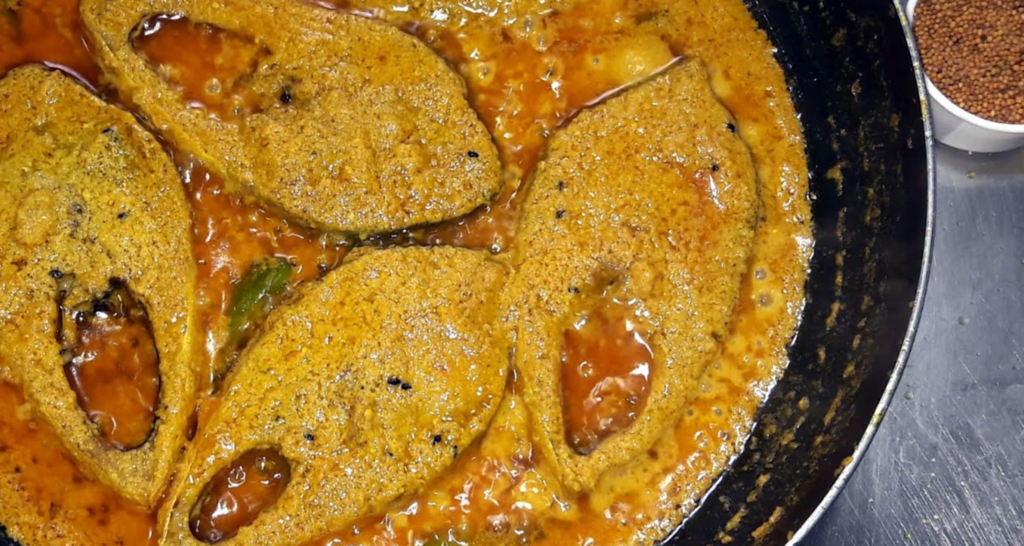The Hilsha fish, locally known as “Ilish,” holds a special place in the culture, economy, and cuisine of Bangladesh. Among the many rivers that nourish the life and livelihoods of Bangladeshis, the Padma River is perhaps the most revered when it comes to the Hilsha fish. Often referred to as the “silver queen” of rivers, Hilsha from the Padma has a reputation that is unparalleled.
Hilsha, particularly from the Padma River, is deeply embedded in the cultural fabric of Bangladesh and West Bengal, India. For Bengalis, this fish is not just food but a symbol of heritage, prosperity, and identity. Its significance transcends the kitchen and dining table, finding a place in literature, art, festivals, and even in social customs.
The Uniqueness of Padma’s Hilsha
What sets the Hilsha from the Padma apart from those found in other rivers is its exceptional taste and texture. Fish experts and enthusiasts alike agree that the Hilsha from the Padma River is distinctly more flavorful and tender. The fish’s unique taste can be attributed to the Padma’s water composition, which is rich in minerals, and the ideal breeding conditions that the river provides. The swift currents of the Padma also make the fish more muscular, which in turn enhances its texture.
Economic Importance
The Hilsha is not only a culinary delight but also a significant contributor to Bangladesh’s economy. It is the country’s national fish and accounts for a substantial portion of the nation’s fish production. Hilsha fishing is a major livelihood for many fishermen who rely on the Padma’s bounty. In fact, a large percentage of the Hilsha supply in Bangladesh comes from the Padma River, and it is also a key export product, particularly to neighboring India.
Cultural Significance
Beyond its economic impact, the Hilsha fish holds immense cultural and symbolic importance. It is an integral part of Bengali cuisine, often associated with celebrations like the Bengali New Year (Pohela Boishakh), and served at weddings and other significant social gatherings. Recipes such as “Sorshe Ilish” (Hilsha cooked in mustard sauce) and “Bhapa Ilish” (steamed Hilsha) are iconic dishes in Bengali households. For many, a meal with Padma’s Hilsha is a matter of pride, and its presence at the table signifies festivity and prosperity.
Challenges Facing Hilsha Fishery
Despite the thriving demand, the Hilsha population faces several challenges. Overfishing, especially of juvenile Hilsha (known as “Jatka”), has led to concerns about the sustainability of this fishery. Efforts have been made by the Bangladeshi government to protect Hilsha breeding by imposing seasonal bans on fishing and restricting the capture of juvenile Hilsha. These conservation measures are crucial for ensuring that the Hilsha population remains viable for future generations.
Pollution and climate change are also emerging threats. The Padma River, like many rivers in the region, is affected by industrial pollution, agricultural runoff, and changes in water flow due to upstream dams. All of these factors could potentially impact Hilsha breeding and migration patterns, posing risks to their long-term sustainability.
Efforts for Preservation
To combat these challenges, Bangladesh has implemented several initiatives aimed at conserving the Hilsha population. The government has designated “Hilsha sanctuaries” in key breeding areas and imposed fishing bans during spawning seasons. These initiatives have shown promise, with reports indicating a rise in Hilsha catch sizes and populations in recent years. Public awareness campaigns have also played a role in educating local communities about the importance of protecting juvenile fish.
Culinary Traditions
Bengali cuisine is celebrated for its subtle and sophisticated use of flavors, and Hilsha is a centerpiece in many traditional dishes. Its delicate, oily flesh can be prepared in a variety of ways, making it a versatile component of Bengali meals. Some iconic preparations include:
- Sorshe Ilish: Hilsha cooked in a mustard sauce, a dish that perfectly exemplifies the bold yet balanced flavors of Bengali cooking.
- Bhapa Ilish: Steamed Hilsha with a mustard paste, coconut, and green chilies, a simple yet aromatic dish that highlights the natural flavors of the fish.
- Ilish Pulao: A rich, fragrant rice dish cooked with Hilsha, combining the delicate flavors of the fish with spices and herbs.

The preparation of Hilsha is often seen as a test of culinary skill. Recipes are passed down through generations, and each family may have its own variation, making the preparation of Hilsha an intimate cultural ritual in many Bengali homes.
Festivals and Celebrations
The Hilsha fish also plays a crucial role in Bengali festivals, particularly during Pohela Boishakh (Bengali New Year), where serving Hilsha with rice is considered auspicious. It symbolizes good fortune, wealth, and the hope for a prosperous year ahead. The phrase “Ilish maachh, panta bhaat” (Hilsha fish and soaked rice) is often associated with this celebration, reflecting the traditional simplicity yet cultural richness of the Bengali New Year meal.

In weddings and other significant social events, Hilsha is often gifted as a symbol of goodwill and prosperity. In some rural communities, a groom’s family may present Hilsha to the bride’s family as part of the marriage negotiations, signifying respect and a gesture of affluence. This custom of exchanging Hilsha reinforces its status as a symbol of Bengali identity and family honor.
Hilsha in Literature, Art, and Proverbs
Hilsha has found its way into Bengali literature and art for centuries. Bengali poets, writers, and artists have often celebrated the beauty and flavor of Hilsha in their works. Its shimmering silver appearance and delectable taste have made it a subject of metaphor and admiration.
In Bengali proverbs, the Hilsha is also mentioned, showcasing its importance in daily life. Phrases like “Macher Raja Ilish” (Hilsha is the king of fish) illustrate the reverence Bengalis have for this fish. Its cultural symbolism extends beyond the dining table, representing excellence, refinement, and a shared cultural identity.
Symbol of Identity and Nostalgia
For many Bengalis, especially those living abroad, Hilsha is a taste of home. It evokes memories of family gatherings, festive meals, and the simple joy of a perfectly cooked fish. The act of bringing Hilsha to the table during significant occasions, especially from the Padma River, is an expression of cultural pride. The fish connects generations and creates a shared sense of belonging.
In Dhaka and Kolkata’s bustling fish markets, the arrival of Hilsha season creates excitement. People often rush to buy the first Hilsha of the season, and conversations about its size, quality, and price dominate households. The availability of Padma’s Hilsha is seen as a mark of affluence, and serving it to guests signifies a sense of respect and celebration.
Hilsha: A Fish That Binds Tradition and Modernity
While Hilsha is rooted in traditional Bengali customs, its influence remains strong in modern contexts. Bengali restaurants worldwide often showcase Hilsha on their menus, preserving its cultural significance for younger generations who may be far removed from the rivers of Bangladesh. In popular media and advertisements, Hilsha is regularly featured as a symbol of Bengali culinary tradition.
In conclusion, the Hilsha fish of Padma is not merely a dish to savor—it is a cultural icon that embodies the spirit of Bengali life. Whether served in rural homes or elite urban restaurants, the fish connects people to their heritage, offering a sense of continuity between the past and the present. It is a symbol of prosperity, joy, and unity, cherished by Bengalis everywhere.

